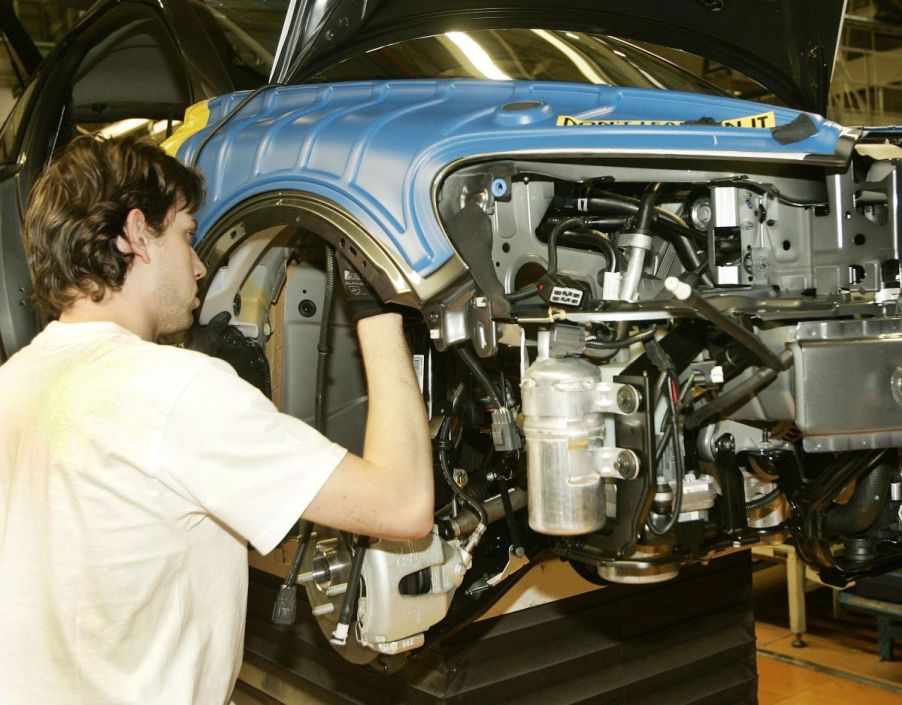
A Complete Guide to Car Differentials: How to Turn a Corner
If you’ve shopped for a car or read any brochures or spec pages for new cars lately, you’ve seen various terms associated with differentials. While a torque-vectoring differential sounds cool, is it better than limited-slip or electronic locking types? Additionally, what about maintenance? Do high-tech differentials require more or less than open differentials? Here’s everything you need to know about car differentials.
What is the purpose of a car’s differential?
A car’s differential allows it to turn left or right while applying engine power to the wheels on both sides. Driving says that when cornering, the wheels on the outside of the turn travel farther and spin faster than those on the inside of the curve. If a car had a solid axle between the left and right wheels, it would either twist the axle or one tire would slip and lose traction. The differential allows the left- and right-side wheels to rotate at different speeds by using a system of gears within it.
Where is a vehicle’s differential located?
A car’s differential is part of the drivetrain, but its location depends on its driveline type: front-wheel, rear-wheel, four-wheel, or all-wheel drive. How Stuff Works says that front-wheel and rear-wheel drive cars have one differential between the drive wheels. Four-wheel and all-wheel drive vehicles often have three differentials: front, rear, and center. However, a transfer case usually replaces the center differential on part-time four-wheel drive trucks and SUVs.
A driveshaft connects the transmission to the differential in front- and rear-wheel drive cars. Four- and all-wheel drive vehicles also use a driveshaft between the transmission and the transfer case or center differential, and more drive shafts connect from there to the front and rear differentials.
What about the various types of differentials?
CarFax says the most common type of differential is the open style, sometimes called an “open diff.” While open diffs allow the vehicle to turn corners without binding, all power will go to the tire with the least traction. For example, if you’re driving in mud or snow and one tire slips into a slick spot, the other will remain stationary while the stuck tire spins futilely.
Limited-slip differentials often employ various methods to route power to the tire with the most traction. The different types of limited-slip differentials include mechanical-clutch, active, viscous, Torsen, and torque-vectoring. While the mechanical-clutch type is popular, the Torsen-type limited-slip differential is typical on sports cars due to its proprietary gear set’s robust nature. Universal Technical Institute says torque-vectoring differentials utilize sensors to monitor each wheel’s speed and electronically distribute power to each wheel for maximum traction.
Locking differentials, most often found in off-road oriented vehicles but in some performance cars as well, allow drivers to lock the differential so that power goes to each side without slipping. According to The Drive, locking differentials use electrical or pneumatic actuators to lock the gears internally. Locking the gears maximizes traction for rock crawling, mud bogging, drag racing, or drift-style burnouts.
What maintenance does a car’s differential require?
Since differentials contain oil, changing that oil is the most common maintenance task. Clutch-type differentials will also require new clutch packs at some point, and all types are subject to wear and tear depending on their use. Some common warning signs of a failing differential include the following:
- Noise and vibration from the driveline
- A clunking sound when putting your car in gear
- Whining or whistling sounds, especially when cornering
- Oil leaks, especially from around the input or output shafts
Changing the differential oil is an easy DIY task, but a professional should handle replacing clutch packs and seals unless you’re a top-notch mechanic. CarFax says replacing seals and adjusting gear backlash should cost $200 to $400, but the cost of replacing a differential depends mainly on the make of your car. Replacement could range from $1,100 on a Toyota Camry to $3,000 for a new BMW differential.
Now that we’ve helped you turn the corner on your knowledge of differentials, it’s up to you to decide how to use your vehicle and which type is best suited. Let us know in the comments which differential variety your car has and if you wish it were different.





